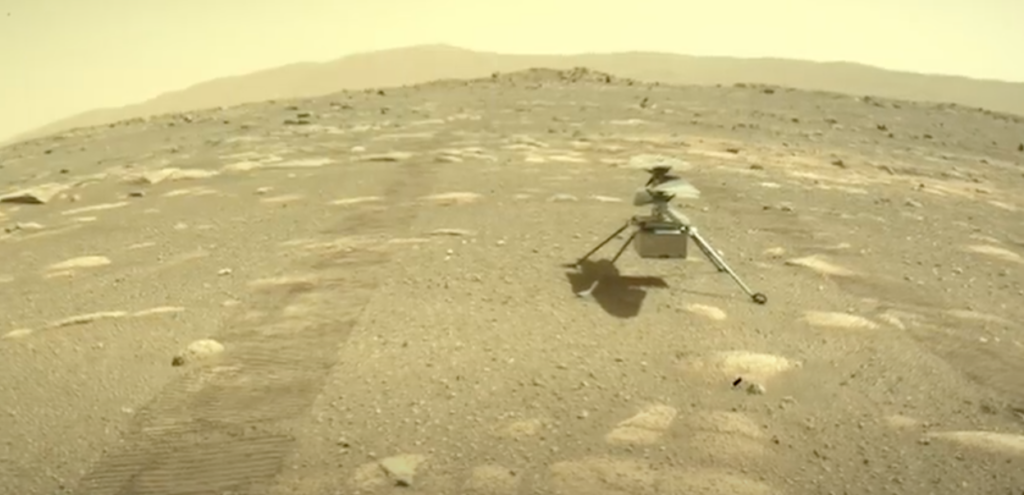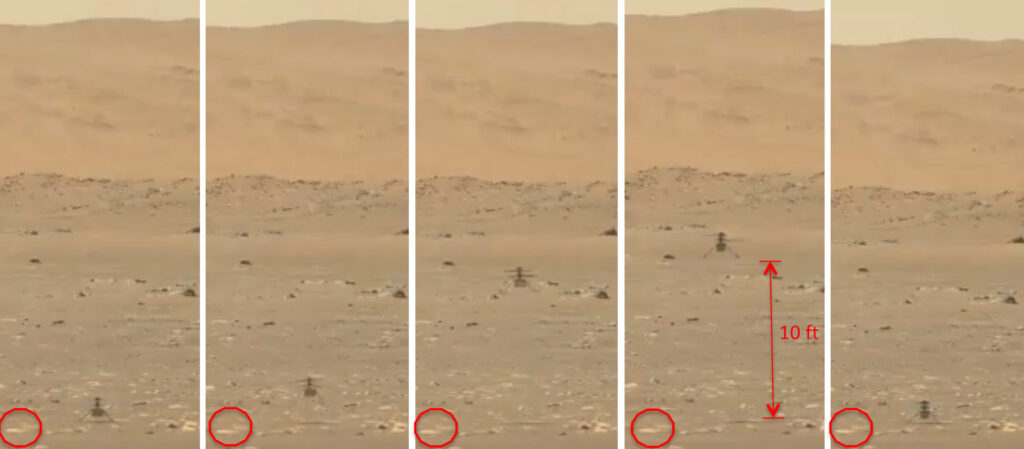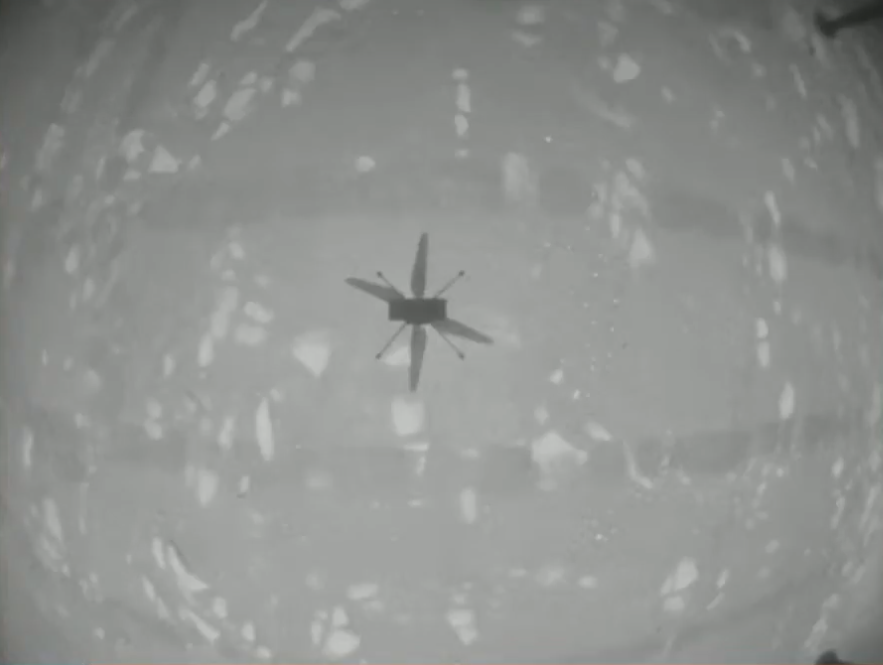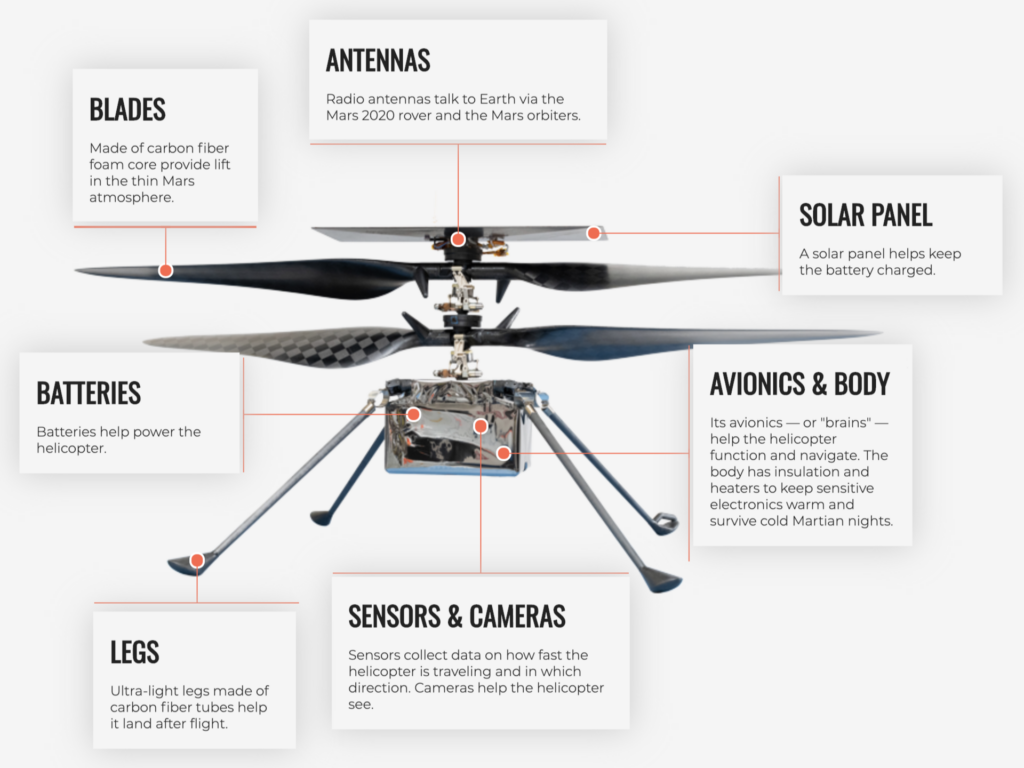Peter Lobner
NASA’s Perseverance rover landed on Mars on 18 February 2021 carrying an impressive suite of scientific instruments and another vehicle, the autonomous Mars helicopter Ingenuity. The Perseverance rover joins the Curiosity rover and the InSight lander, as active NASA missions on the surface of Mars. The Perseverance mission website here: https://mars.nasa.gov/mars2020/
One of the important objectives of this mission is to demonstrate that the solar-powered Ingenuity helicopter can fly in the thin atmosphere of Mars. On Earth, our standard sea level air pressure is 1,013 millibars. On Mars, the surface atmospheric pressure varies during the year, but averages between 6 to 7 millibars. That’s equivalent to an Earth pressure altitude of 88,000 to 90,600 ft (27,127 to 27,615 m). On Earth, the helicopter altitude record is 40,820 ft (12,442 m). During development, Ingenuity’s rotor system was tested in a high-altitude chamber to validate its expected performance.
Ingenuity was carried under the rover and was deployed on 3 April 2021, about six weeks after landing.

After system checkouts and software updates, Ingenuity flew for the first time on 19 April 2021, becoming the first aircraft ever to fly on Mars. The first flight took place in Jezero Crater, lasted 39 seconds, and covered a vertical distance of about 10 feet (3 m), with Ingenuity landing back at the takeoff point. For this first flight, the Perseverance rover was parked about 211 feet (64.3 meters) away and chronicled the flight operations with its cameras.


Source: Screenshot from NASA video.

taken from its own downward-looking navigation camera.
Source: Screenshot from NASA video.
You can watch a short (0:58 minute) HD video of the first flight here: https://www.facebook.com/NASAPersevere/videos/201857924836638/
A longer (47:20 minute) video from NASA Mission Control is here:
The Mars helicopter was conceived as a 30-day technology demonstration. To meet the weight and space budgets allocated for the Mars Helicopter, Ingenuity had to be a very compact, lightweight flying machine. The 1.8 kg (4.0 lb) mini-copter flies with two electric motor driven, counter-rotating, coaxial rotors about 1.1 m (3 ft 7 in) in diameter. The rotors are powered from a rechargeable 2 Ah (Amp-hour) lithium-ion battery. This is similar to the battery capacity of many cell phones. The general arrangement of the Ingenuity Mars helicopter is shown in the following diagram.

For more information on Ingenuity, visit the NASA website here: https://mars.nasa.gov/technology/helicopter/